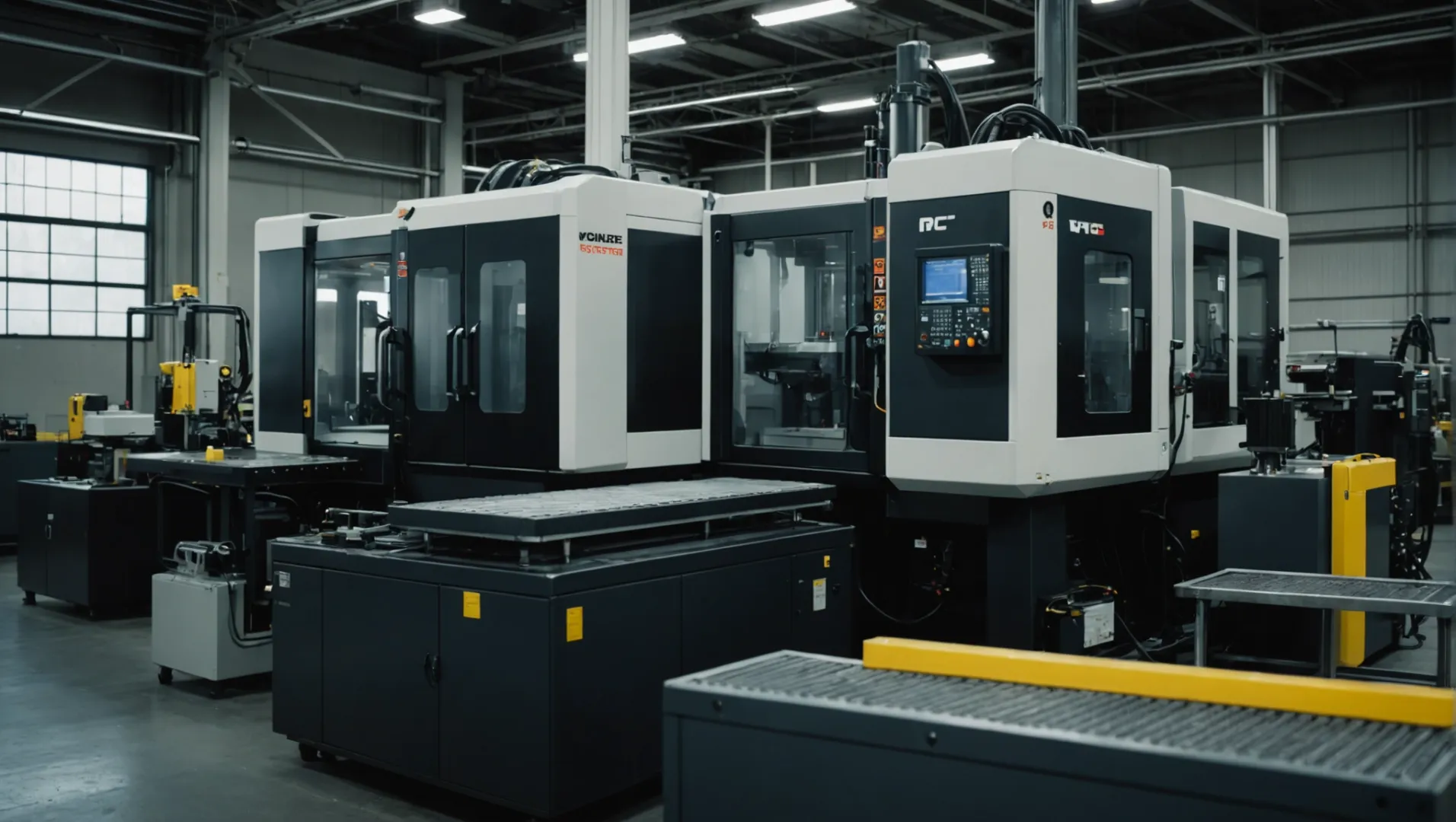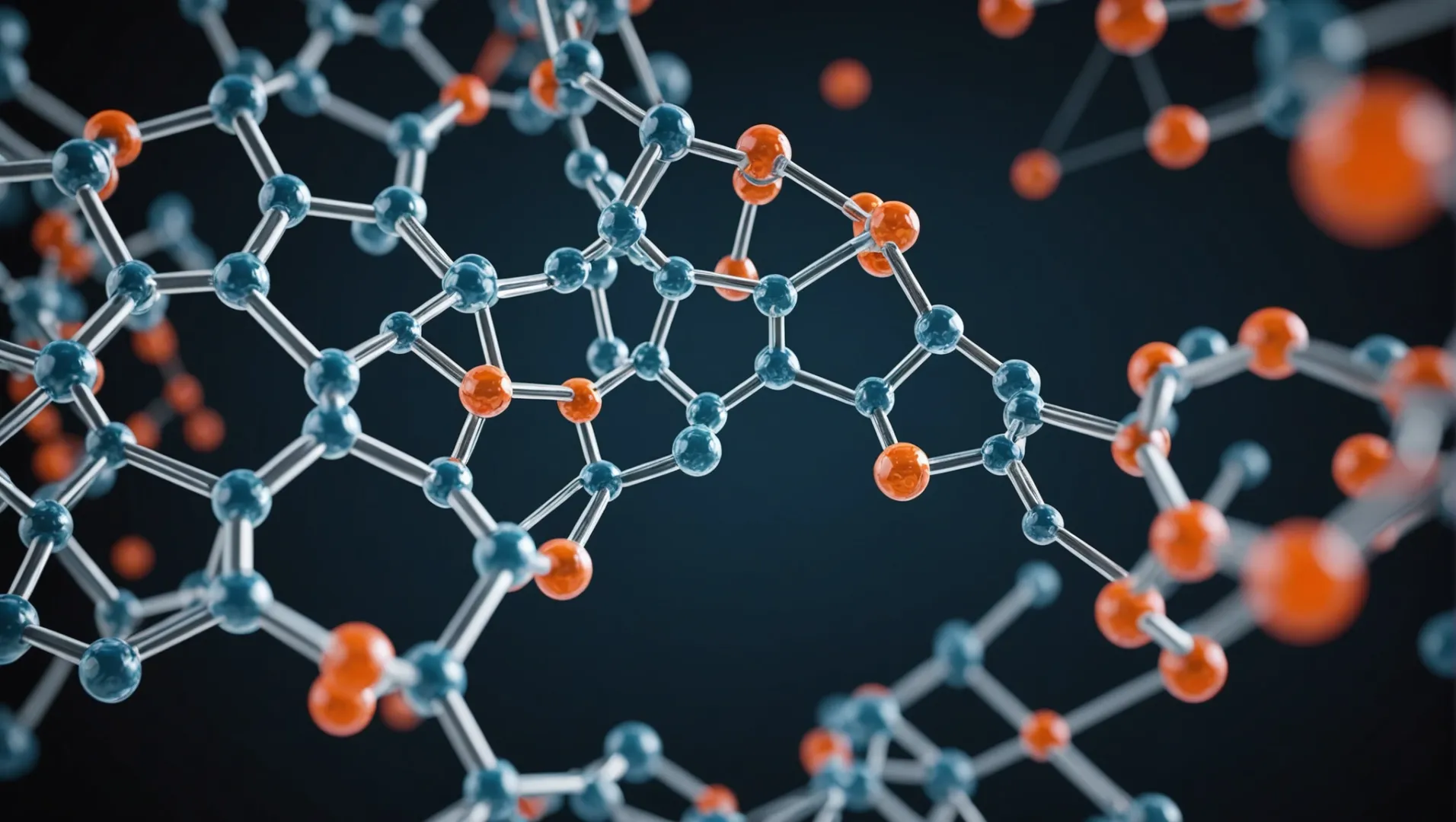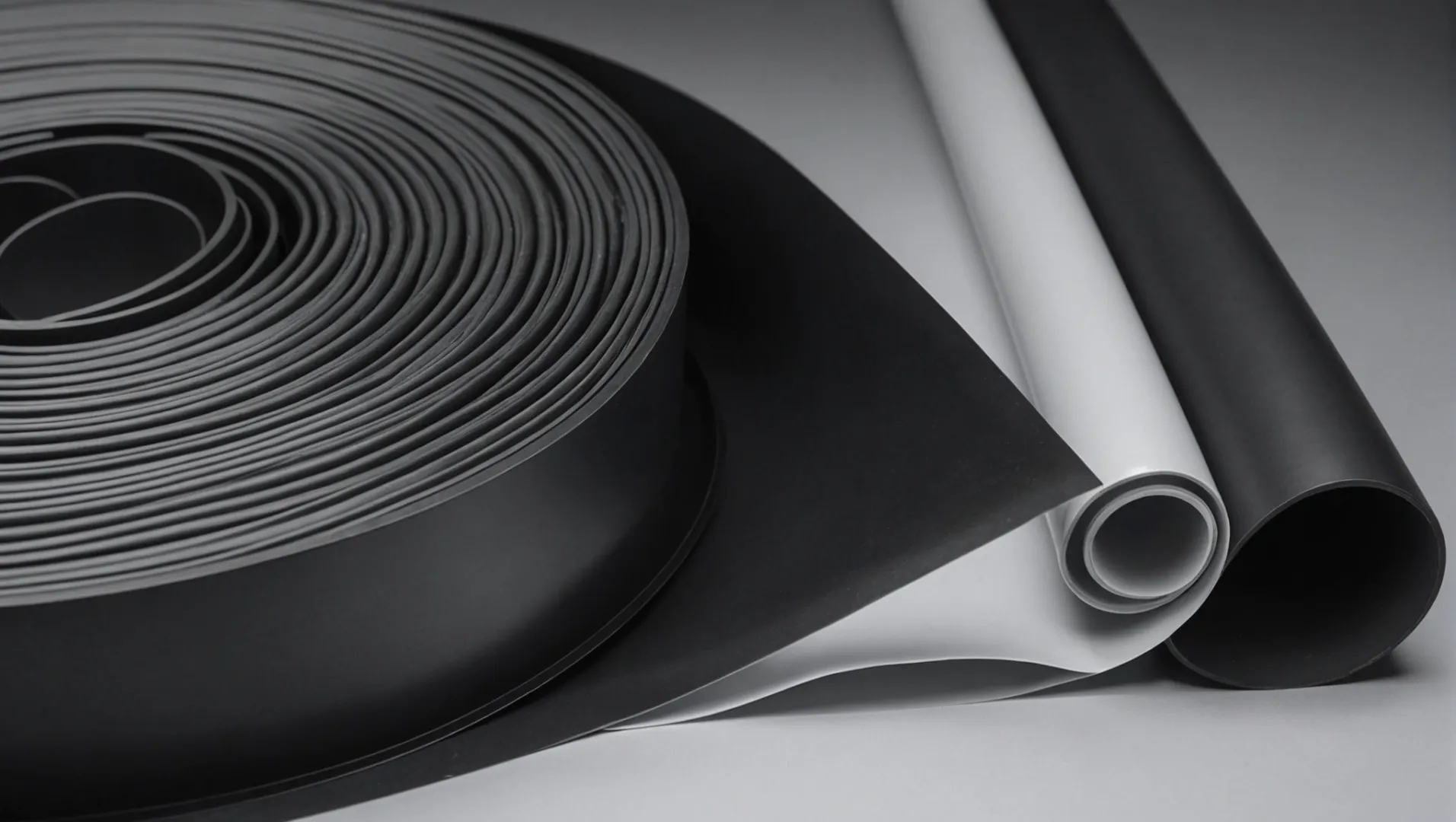
Deciding on the right material for injection molding can feel like navigating a maze. Each turn leads to new insights about quality, cost, and sustainability.
TPE and PVC differ notably in their chemical properties, elasticity, environmental impact, and processing performance in injection molding. TPE offers greater elasticity and environmental benefits, while PVC is more chemically stable but may release harmful substances.
Let’s delve deeper into the heart of these materials and uncover what truly sets them apart.
TPE is more environmentally friendly than PVC.True
TPE lacks harmful heavy metals, phthalates, and has lower environmental impact.
What Are the Chemical Differences Between TPE and PVC?
Choosing between TPE and PVC requires understanding their distinct chemical characteristics and implications for injection molding.
TPE is a blend of rubber and plastic, offering elasticity and processability, while PVC is a chlorine-rich polymer known for its chemical stability but potential environmental hazards.

Understanding the Chemical Composition
TPE: Thermoplastic elastomers are hybrid materials that integrate the characteristics of both rubber and plastic. They are composed of styrene, olefins, polyurethanes, and other complex molecules, which provide them with unique properties such as high elasticity and ease of processing. This complexity in molecular structure makes TPE highly adaptable to different applications and allows for customization in terms of hardness and flexibility.
PVC: Polyvinyl chloride is a synthetic polymer derived from vinyl chloride monomers. Its primary chemical characteristic is the inclusion of chlorine, which imparts high chemical stability. However, this same feature can become a drawback under certain conditions, as it may lead to the release of toxic substances when exposed to high temperatures or prolonged sunlight exposure. Learn more about PVC‘s stability1.
Comparing Environmental Implications
TPE‘s Environmental Edge: Generally regarded as more environmentally friendly, TPEs do not contain harmful heavy metals or phthalates. During both production and use, TPEs have a minimal environmental footprint. Their ability to be recycled further enhances their appeal in industries aiming for sustainable practices.
PVC‘s Environmental Challenges: Although PVC is renowned for its durability, the production process often involves hazardous chemicals such as lead salt stabilizers. Additionally, when incinerated, PVC can emit toxic dioxins, posing significant environmental pollution risks. Explore the environmental impact of PVC2.
Analyzing Processing Performance
The difference in processing temperature between TPE and PVC significantly affects their applications in injection molding.
-
TPE: Its lower processing temperature range (150℃-230℃) translates into reduced energy consumption and relaxed equipment requirements. This makes TPE an attractive option for manufacturers seeking cost-effective and energy-efficient solutions.
-
PVC: With higher processing temperatures (160℃-200℃), along with a need for greater pressure and shear force, PVC demands more robust equipment and energy input. This can increase operational costs but may be justified by its high chemical stability in certain applications.
| Property | TPE | PVC |
|---|---|---|
| Elasticity | High | Limited |
| Environmental Impact | Low | Potentially High |
| Processing Temperature | Lower (150℃-230℃) | Higher (160℃-200℃) |
Understanding these differences can guide manufacturers in choosing the right material for their specific needs, optimizing both performance and sustainability outcomes.
TPE has a lower processing temperature than PVC.True
TPE's processing temperature is 150℃-230℃, while PVC's is 160℃-200℃.
PVC is more environmentally friendly than TPE.False
PVC can emit toxic dioxins, whereas TPEs have minimal environmental impact.
How Do Elastic Properties Affect Material Choice?
Choosing materials based on their elastic properties can influence product durability, flexibility, and application suitability.
Elastic properties determine how materials respond to stress, impacting their suitability for specific applications. For instance, materials with higher elasticity like TPE are preferred in applications requiring flexibility, whereas materials with lower elasticity like PVC are chosen for rigidity and stability.

Understanding Elastic Properties
Elasticity is the ability of a material to resume its normal shape after being stretched or compressed. This property is crucial in deciding how a material performs under stress and how it can be used in different applications.
For instance, in the context of injection molding3, choosing a material with the right elastic properties can significantly affect the end product’s performance.
Comparing Elasticity: TPE vs. PVC
| Property | TPE | PVC |
|---|---|---|
| Elastic Recovery | High elastic recovery rate | Limited elastic recovery |
| Flexibility | Can stretch and return to shape | Offers some flexibility |
| Hardness Range | Adjustable according to needs | Less adjustable |
Thermoplastic Elastomer (TPE):
TPE is known for its excellent elasticity, which allows it to stretch significantly and return to its original form. This makes TPE highly desirable for products that require flexibility and durability, such as automotive seals or medical devices.
Polyvinyl Chloride (PVC):
PVC, while possessing some degree of flexibility, lacks the high elastic recovery seen in TPE. As a result, it’s often used in more rigid applications like construction materials or packaging.
Practical Implications of Elastic Properties
-
Product Design:
- Products needing extensive bending or stretching without deformation are better suited to TPE due to its superior elasticity.
- PVC‘s limited elasticity is ideal for products where structural rigidity is essential.
-
Durability and Longevity:
- High elasticity contributes to longer-lasting products in applications involving repeated stress or movement, favoring TPE.
- In static environments, where flexibility is less critical, PVC’s chemical stability makes it a better choice.
-
Environmental Considerations:
- The elastic properties of TPE allow it to be used in applications that reduce waste through extended product life.
- PVC‘s properties4 might lead to environmental challenges if the product is subject to wear and tear.
By understanding these aspects of elasticity, manufacturers can make informed decisions that not only enhance product performance but also align with environmental goals.
TPE is more flexible than PVC.True
TPE has higher elasticity, allowing it to stretch and return to shape.
PVC is better for flexible applications than TPE.False
PVC has limited flexibility compared to TPE, making it less suitable.
Which Material Is More Environmentally Friendly?
With growing environmental concerns, choosing eco-friendly materials for manufacturing is crucial.
TPE is generally more environmentally friendly than PVC due to its lack of harmful heavy metals and phthalates, and minimal environmental impact during production and use. In contrast, PVC may release toxic substances like dioxins during incineration, posing environmental hazards.

Environmental Impact of TPE
Thermoplastic Elastomers (TPEs) are widely regarded as a more sustainable option5 in the field of injection molding. One of their main advantages is the absence of harmful substances like heavy metals and phthalates, which are common in other plastics. TPEs are also recyclable, which contributes to reduced waste and a smaller carbon footprint.
During the production and application phases, TPEs demonstrate a significantly lower impact on the environment and human health. They don’t emit harmful gases when processed under recommended conditions, making them ideal for applications where safety and sustainability are paramount.
Environmental Concerns with PVC
Polyvinyl Chloride (PVC), while offering stability and durability, has environmental drawbacks that cannot be overlooked. The production process of PVC often involves the use of harmful additives such as lead salt stabilizers. These substances can leach into the environment, causing soil and water pollution.
Moreover, when PVC products are incinerated, they can release toxic dioxins, which are persistent organic pollutants. These dioxins are known to have serious health implications for both humans and wildlife.
Lifecycle Analysis: TPE vs. PVC
In a lifecycle assessment6, TPE tends to perform better than PVC regarding energy efficiency and emissions. The lower processing temperatures required for TPE reduce energy consumption significantly compared to PVC.
| Criteria | TPE | PVC |
|---|---|---|
| Harmful Additives | None | Possible use of lead |
| Recyclability | High | Limited |
| Incineration Emissions | Low | High (toxic dioxins) |
| Processing Temperature | 150℃-230℃ | 160℃-200℃ |
The Future of Eco-Friendly Manufacturing
As industries move towards greener practices, the choice between TPE and PVC becomes clearer. TPE‘s favorable environmental profile makes it a preferred choice in industries like automotive, electronics, and medical devices. However, innovation in PVC formulations continues, aiming to mitigate its environmental impact by developing more sustainable additives and recycling methods.
Exploring alternative materials7 and innovations in material science is crucial for achieving sustainable manufacturing goals.
TPE contains harmful heavy metals.False
TPEs do not contain harmful heavy metals, unlike some other plastics.
PVC releases dioxins when incinerated.True
PVC can release toxic dioxins during incineration, posing hazards.
What Are the Key Applications of TPE and PVC in Various Industries?
Thermoplastic Elastomers (TPE) and Polyvinyl Chloride (PVC) play pivotal roles across multiple industries due to their unique properties.
TPE is favored in automotive, electronics, and medical sectors for its flexibility and safety, while PVC is widely used in construction, packaging, and toys for its durability and cost-effectiveness.

Automotive Industry
In the automotive sector8, TPE is extensively used for its softness and elasticity, making it ideal for manufacturing interior parts like dashboards, sealing strips, and bumpers. This flexibility not only enhances comfort but also contributes to vehicle safety. Conversely, PVC‘s durability and resistance to environmental factors make it suitable for exterior components such as window seals and protective trim.
Electronics and Electrical Industry
The electronic and electrical industries benefit significantly from TPE due to its superior insulation properties and weather resistance. It’s commonly used in manufacturing wires, cables, plugs, sockets, and even mobile phone cases. Meanwhile, PVC‘s low cost and ease of printing make it a staple in producing electronic housings and protective covers.
Medical Device Industry
TPE’s biocompatibility ensures it is widely adopted in the medical field9. It is used for producing safe medical devices such as infusion tubes, catheters, and gloves. PVC, although less prevalent in medical applications due to potential health risks associated with additives, is still employed for non-critical equipment such as IV bags and oxygen masks.
Construction Industry
PVC dominates the construction industry10 thanks to its corrosion resistance and waterproof characteristics. It is essential in creating doors, windows, pipes, and flooring materials. These attributes ensure that PVC remains a preferred choice for long-lasting building materials.
Packaging Industry
In packaging, PVC’s cost-effectiveness and excellent printing capabilities make it a top choice for producing plastic bags, bottles, and films. However, TPE is gradually gaining traction in eco-friendly packaging solutions due to its non-toxic nature.
Toy Industry
For toys and models, PVC‘s plasticity allows for diverse shapes and vibrant colors. This makes it ideal for the toy industry, although concerns about safety standards are prompting a gradual shift towards safer materials like TPE.
TPE is used in automotive for dashboards and bumpers.True
TPE's flexibility and elasticity make it ideal for these parts.
PVC is primarily used in medical devices for safety.False
TPE is preferred for safety; PVC is used for non-critical items.
Conclusion
By grasping the distinct characteristics of TPE and PVC, you empower your manufacturing decisions to enhance product quality and sustainability.
-
Discover how PVC’s chlorine content affects its chemical stability.: PVC Chemical Compatibility · Rigid PVC is chemically resistant to many acids, salts, corrosives, bases, fats, and alcohols · The melting point of PVC is low, … ↩
-
Understand the environmental concerns related to PVC manufacturing.: PVC is the most environmentally damaging plastic. The PVC lifecycle — its production, use, and disposal — results in the release of toxic, chlorine-based … ↩
-
Explore how elasticity affects the design and efficiency of molding processes.: Besides, the interlayer shear stress is small, and the elastic rebound after demolding is large. So the shrinkage can also be reduced by an appropriate amount. ↩
-
Learn about how PVC’s limited elasticity influences environmental outcomes.: PVC-based products used under atmospheric conditions are exposed to the destructive effects of atmospheric factors, such as UV radiation, precipitation, and … ↩
-
Understand why TPEs are favored for their eco-friendly properties.: However, TPE mats are not biodegradable, and they can release harmful chemicals when they are heated. But for all the doubts about TPE, we … ↩
-
See how TPE compares to PVC in lifecycle assessments.: Life cycle assessment of windows made of aluminium, wood or PVC. •. The necessary data is collected together with window manufacturers and … ↩
-
Discover emerging sustainable materials in manufacturing.: There are three main types of sustainable materials used in manufacturing: renewable resources, recycled materials, and biodegradable materials. ↩
-
Explore how TPE enhances safety and comfort in vehicles.: Elastron provides TPE (Thermoplastic Elastomer) solutions for interior, exterior, under the hood applications of automotive industry. Click to learn more! ↩
-
Discover why TPE is preferred for safe medical equipment.: The HSBC-type medical grade TPEs from Kuraray are very safe. Products manufactured from these materials can be used wherever hygiene is particularly important. ↩
-
Learn how PVC contributes to durable construction materials.: PVC is widely used for plumbing and electrical applications in new projects and to replace traditional materials like wood and metal in … ↩






